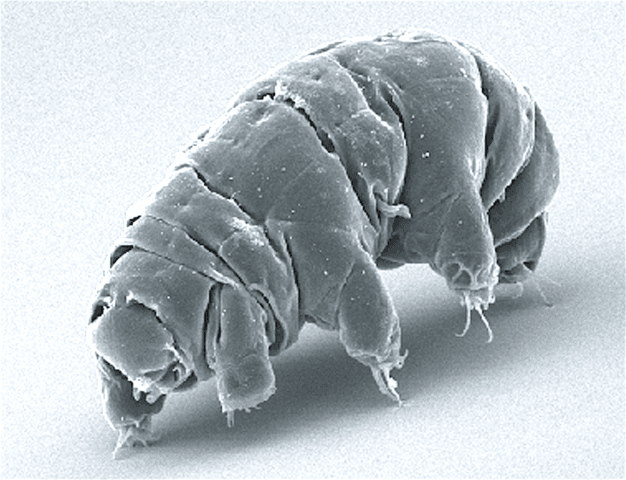Sometimes, small creatures seem to be more scary to us compared to larger animals, exactly because we can’t spot them that easily. Just recently, scientists discovered a new tardigrade species, found in a Japanese parking lot. The creatures have weird, bulging legs and are equipped with string-like filaments growing from their eggs.
Scientists discovered the new Tardigrade species, which was published in a paper on Wednesday in PLOS One. The paper was published by Daniel Stec from the Jagiellonian University, Poland, and his colleagues.
Tardigrades are described as short, plumb, eight-legged micro-sized animals that measure roughly 0.02 inches long. Sometimes, scientists refer to them as water bears or moss piglets, as they pop up anywhere, from the deep sea to rain forests. According to the scientists, some species of tardigrades can survive radiation of extreme levels, air deprivation, and the vacuum of space. The fossilized evidence of tardigrades dates back more than 500 million years ago. There have been around 1,200 tardigrade species identified so far.
The scientists uncovered 10 individuals at the parking lot and took them back to the lab. After that, they bred them in order to increase their samples and watch their growth from eggs.
The team carefully observed the little creatures under the microscope and conducted an analysis on their DNA in order to confirm that it was in fact a new species, which they dubbed Macrobiotus shonaicus. They are similar to certain members of the M. hufelandi group of the tardigrade family the most. The M. shonaicus species is known for a bulging layer on the internal surface of some of its legs. It is also equipped with tentacles that grow from its eggs.
The string-like tentacles are quite similar to those scientists discovered in two other species described since 2015, known as M. paulinae from Kenya and M. polypiformis from Ecuador. That helped the researchers determine where the newest species belongs in the taxonomical tree.
Now that scientists have found the new tardigrade species, that means that the number of known tardigrade species in Japan is 168 instead 167. Scientists discover around 20 new species every year, according to the paper.
Michael Shaw, tardigrade enthusiast and author of the study, wrote in his article that the critters are located in moist clumps of moss or lichen on trees. He also wrote that these animals can be found even in the bricks around your neighborhood. He wrote a tutorial on how to spot the tardigrade and it includes scrapping the moss into a petri dish, adding water and letting it rest overnight. The next morning, you might be greeted by a small tardigrade in the dish using an amateur microscope.
Shaw noted in his article that tardigrades can live a hundred years and withstand the cruelest conditions of heat and cold. In order to protect themselves, they enter a type of hibernation called cryptobiosis.
“They protect themselves by going into a type of hibernation called cryptobiosis. They roll up into a dried little ball, and just stay dormant, with no sign of life whatsoever.”
Shaw’s full article can be read here, and it’s also archived here.





